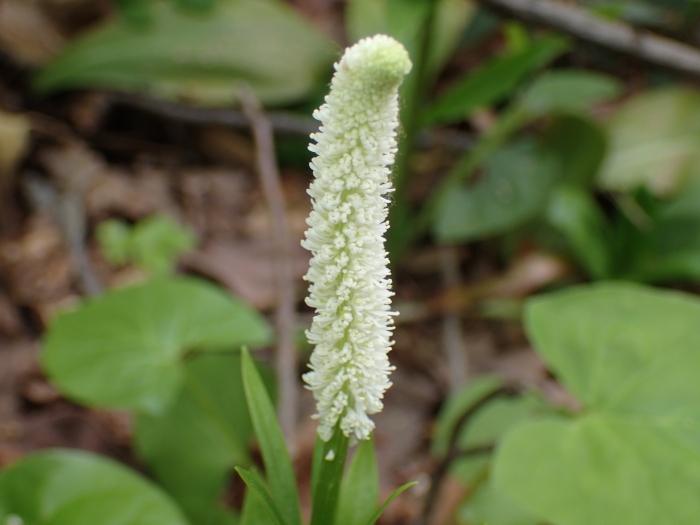Fairywand
(Chamaelirium luteum)
Fairywand (Chamaelirium luteum)
/
/

John P Friel
CC BY 4.0
Image By:
John P Friel
Recorded By:
Copyright:
CC BY 4.0
Copyright Notice:
Photo by: John P Friel | License Type: CC BY 4.0 | License URL: http://creativecommons.org/licenses/by/4.0/ | Rights Holder: John P Friel | Publisher: iNaturalist | Date Created: 2017-04-15T14:22:21-07:00 |




















































Estimated Native Range
Summary
Chamaelirium luteum, commonly known as Fairywand, is a deciduous perennial herb native to rich, moist deciduous forests and the edges of woodlands in the Eastern and Southeastern USA. It exhibits sexual dimorphism, with separate male and female plants (dioecious) and a male-biased gender ratio due to higher female mortality and less frequent flowering in females. Female plants can reach up to 1.2 meters in height and have fewer but larger flowers compared to males. Fairywand blooms in late spring to early summer, producing tall spikes of small, white, lily-like flowers that are more prominent on male plants. The plant forms a basal rosette of lance-shaped leaves, and the flowering stalks rise above this foliage, adding vertical interest to shade gardens.
Fairywand is valued for its unique flowering spikes and its adaptability to deep shade conditions, making it a suitable choice for woodland gardens, shade borders, and naturalized areas. It thrives in moist, acidic soil with high organic matter and requires protection from direct sunlight in open areas. In forest settings, it benefits from the dappled shade provided by tall hardwood trees. While it prefers part shade to full shade, it also needs consistent moisture and well-drained soil to prevent root rot. Gardeners should note that due to its dioecious nature, both male and female plants are needed for seed production.CC BY-SA 4.0
Fairywand is valued for its unique flowering spikes and its adaptability to deep shade conditions, making it a suitable choice for woodland gardens, shade borders, and naturalized areas. It thrives in moist, acidic soil with high organic matter and requires protection from direct sunlight in open areas. In forest settings, it benefits from the dappled shade provided by tall hardwood trees. While it prefers part shade to full shade, it also needs consistent moisture and well-drained soil to prevent root rot. Gardeners should note that due to its dioecious nature, both male and female plants are needed for seed production.CC BY-SA 4.0
Plant Description
- Plant Type: Herb
- Height: 2-4 feet
- Width: 1-1.5 feet
- Growth Rate: Slow
- Flower Color: White
- Flowering Season: Spring, Summer
- Leaf Retention: Deciduous
Growth Requirements
- Sun: Part Shade, Full Shade
- Water: Medium
- Drainage: Slow, Medium
Common Uses
Bee Garden, Bird Garden, Border Plant, Low Maintenance, Showy Flowers
Natural Habitat
Rich, moist deciduous forests and woodland edges
Other Names
Common Names: False Unicorn, False Unicorn-Root, Fairy-Wand, Helonias, Blazingstar, Devil’s-Bit, Blazing-Star, Rattlesnake-Root, Chamaelire Doré, Chamélire Jaunissant, Ormlilja
Scientific Names: , Chamaelirium luteum, Helonias dioica, Chamaelirium carolinianum, Veratrum luteum, Chamaelirium obovale, Abalon albiflorum, Abalon albiflorum var. obovatum, Abalon albiflorum var. pumilum, Abalon albiflorum var. serpentarium
GBIF Accepted Name: Chamaelirium luteum (L.) A.Gray